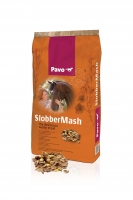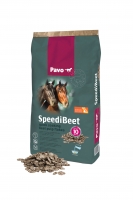|
Advice article filter
|
Colic: all about colic in horsesWhat is colic?Colic is a form of pain in the abdomen. In the horse’s digestive tract, obstructions, cramps, excessive gas accumulation or displacements can occur, often resulting in colic. Cause of colicColic can have a variety of causes, such as worm infection, dental problems, sand accumulation in the intestines, inflammation or paralysis of the intestine. Colic is also often caused by mouldy or spoiled feed. Feed related causes of colic can be, among other things:
Symptoms of colicA horse suffering from colic often does not look well, is listless, or precisely restless. All the symptoms will not always show, but if your horse shows some of the symptoms mentioned below, it could indicate colic:
What to do in case of colicIf you suspect colic, then immediately call the vet and carefully describe the symptoms you have observed. If you can check or count your horse’s heart rate: the higher the heart rate, the faster the vet should come. Further, the cause of action to be taken depends on the intensity of the colic. If possible, walk the horse for 15 - 30 minutes, provided this does not cause any danger for the horse or yourself. If the colic is so serious that it causes danger for the horse or yourself, it could be wise to put the horse in a paddock/riding hall to reduce the risk of it hurting itself. Generally, at that point, rolling will not worsen the colic. Preventing colic in horsesYou cannot always control the occurrence of colic, but there are a number of matters you can take into account in order to prevent colic in your horse to the largest possible extent. We list a number of tips for you:
Feed advice after colicIf your horse has suffered from colic, it is important that the daily ration will be slowly built up again. Do not immediately provide your horse with unlimited roughage, but begin with small portions. You might supplement this with Pavo SpeediBeet, Pavo SlobberMash and vegetable oil for a good passage. Exercising after a colic operationA colic operation is a major medical intervention that a horse will not always survive. If the wound has healed and the horse has also recovered from this operation, you can slowly begin with its rehabilitation, which will initially mean only walking. Three months after the operation, the location of the wound in the abdomen is considered sufficiently strong again to start light exercise again. This could be 15 minutes of lunging or easy riding. Pay proper attention to what your horse can do. Without setbacks, in general, your horse can resume normal training approximately six months after the operation. |




